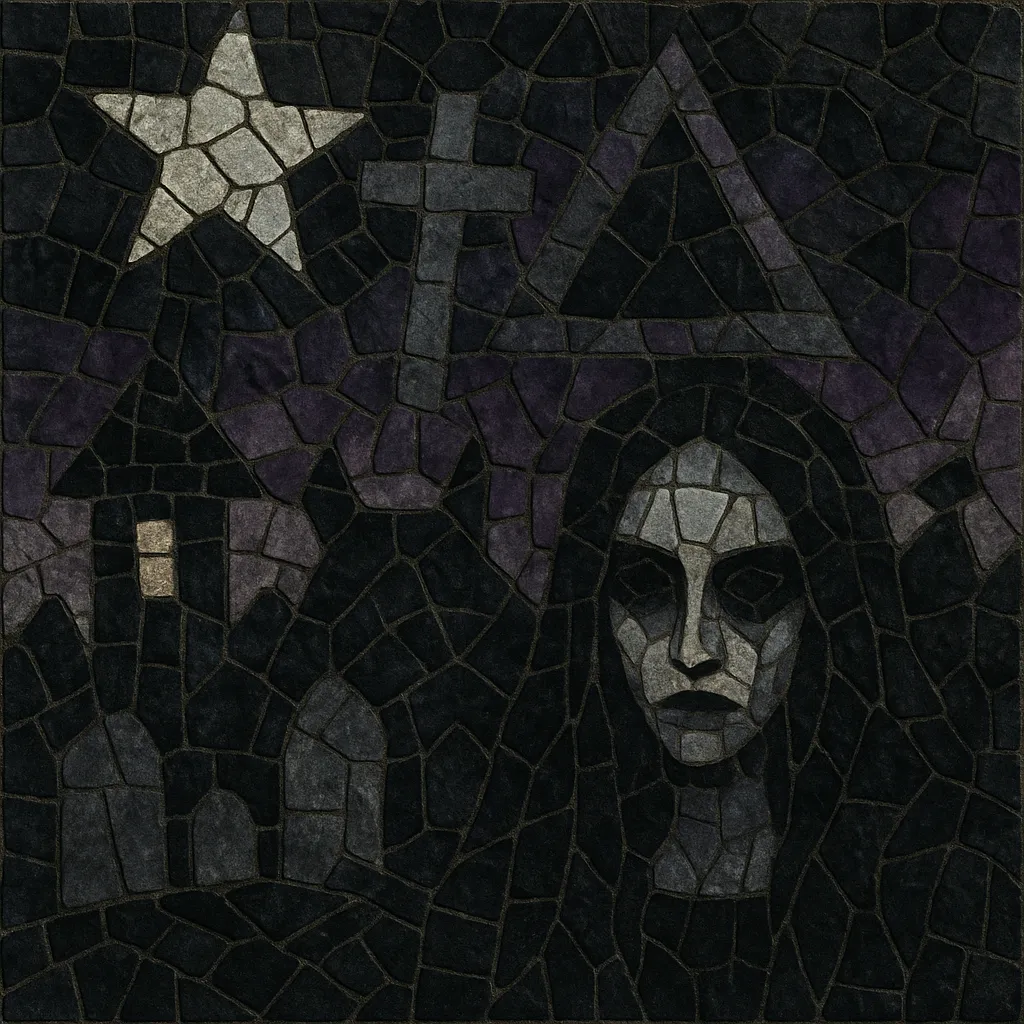
Witch house is a dark, internet-born microgenre that blends chopped-and-screwed hip-hop rhythms with industrial, darkwave, and ambient textures. It favors slow, heavy, half-time beats; foggy pads; detuned synths; and down-pitched, reverb-drenched vocals.
Aesthetically, it leans into occult and horror imagery—distorted crosses, triangles, Unicode glyphs, VHS haze—and a lo-fi, haunted atmosphere. Despite the name, it has little to do with house music; the term was partly tongue-in-cheek, pointing to its witchy, ritualistic vibe and the blog-era tendency to label micro-scenes.
The sound is hypnotic and murky: burial-bell chimes, smeared choirs, granular artifacts, and blown-out 808s moving at a crawl (often 60–75 BPM). It sits between dark electronic traditions and slowed Southern rap, prioritizing mood and texture over virtuosity.
Witch house emerged from the late-2000s blog and Tumblr ecosystems, coalescing around DIY producers who slowed and degraded sounds while borrowing imagery from occult cinema and net art. The term was popularized in 2009 by Pictureplane in blog discourse, describing a small cluster of artists on platforms like MySpace and Bandcamp.
Early releases circulated via boutique imprints and blogs—most notably DISARO (Houston), Pendu Sound (NYC, which hosted the Pendu Disco events), and later Tri Angle Records—helping codify the sound’s slow, half-time beats, blown-out 808s, gauzy pads, and pitch-shifted vocals.
SALEM’s album “King Night” (2010) is widely cited as a touchstone, alongside EPs and singles by White Ring, oOoOO, and Balam Acab. The scene embraced typographic play (e.g., triangles and crosses) and VHS-horror aesthetics, which became inseparable from the music itself. While some argued the label was a meme, the sonic palette—chopped-and-screwed influence, industrial grit, darkwave mood—congealed into a recognizable style.
By the mid-2010s, witch house intersected with adjacent currents: Tri Angle’s roster connected it to ethereal bass and art-pop experimentalism; UK and European acts (CRIM3S, ∆AIMON) carried the torch in darker, noisier directions; and YouTube/SoundCloud communities sustained the style with new producers adopting the aesthetic lexicon.
Although the initial hype waned, the genre’s stylistic DNA—slow, cavernous beats; ghosted vocals; occult visual language—carried into wave, vaportrap, and newer dark-plugg/sigilkore scenes. A new generation (e.g., Sidewalks and Skeletons, BLVCK CEILING) kept the sound alive, while the broader internet’s fascination with liminal, haunted textures affirmed witch house as a foundational blog-era dark electronic style.

